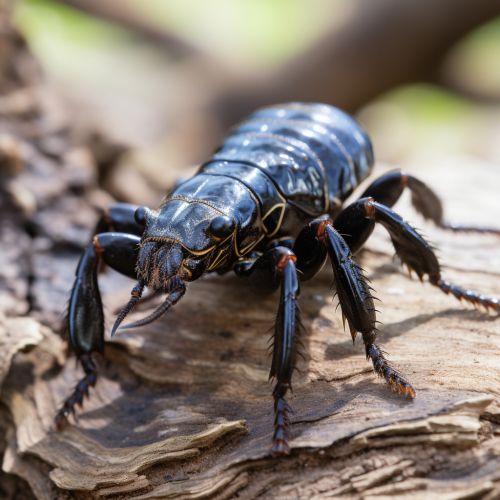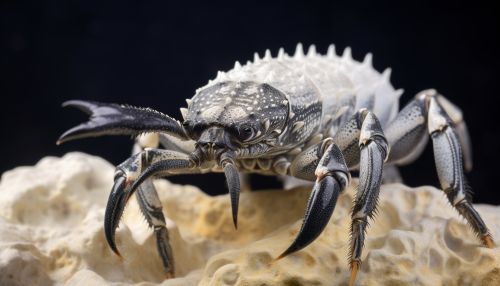Buthidae
Taxonomy and Evolution
The Buthidae family is a part of the order Scorpiones, which belongs to the class Arachnida. The family is one of the largest and most diverse among scorpions, with over 80 genera and 800 species identified to date. The evolutionary history of Buthidae is complex and still under investigation, with ongoing debates regarding the phylogenetic relationships among different genera and species.


Morphology and Anatomy
Buthidae scorpions are known for their robust and thickset bodies, with a pronounced tail segment and a curved stinger. The body is divided into two main parts: the cephalothorax (prosoma) and the abdomen (opisthosoma). The cephalothorax houses the mouthparts, eyes, and the chelicerae and pedipalps, which are used for prey capture and manipulation. The abdomen is further divided into the mesosoma and the metasoma (tail), which ends in a venomous stinger (telson).
Distribution and Habitat
Buthidae scorpions are cosmopolitan in distribution, found in a variety of habitats across all continents except Antarctica. They are particularly abundant in arid and semi-arid regions, but can also be found in forests, grasslands, and even urban environments.
Diet and Hunting Behavior
Buthidae scorpions are primarily nocturnal predators, feeding on a variety of invertebrates and occasionally small vertebrates. They employ a sit-and-wait hunting strategy, remaining motionless until prey comes within striking distance.
Reproduction and Life Cycle
Like all scorpions, Buthidae are viviparous, giving birth to live young. The female carries the young on her back until their first molt, after which they disperse. The life cycle of Buthidae scorpions includes several molting stages before reaching adulthood, with a lifespan varying from 2 to 10 years depending on the species.
Venom and Medical Significance
The venom of Buthidae scorpions is a complex mixture of proteins, peptides, and other molecules. While most Buthidae species are harmless to humans, a few are medically significant, including members of the genera Androctonus, Leiurus, and Parabuthus.
Conservation Status
The conservation status of Buthidae scorpions varies widely, with many species poorly studied. However, habitat loss, pesticide use, and over-collection for the pet trade are recognized threats.
